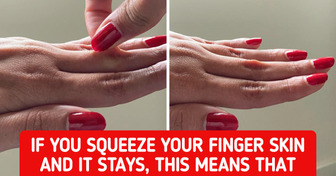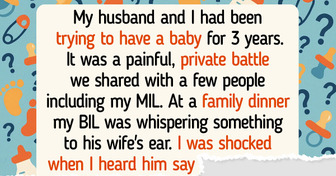Dakota Johnson’s Naked Dress Divides the Internet, as Some Deem It Has “No Class”

They’re part of the family, but few of us know what to do to help them in an emergency. A sudden allergic reaction in our pet, for example, can swell their throat until it suffocates them. Or a simple bottle cork that was left lying around on the floor and later found by our furry friend could block their airways. They’re our loyal companions and, therefore, deserve our best action plans and care, should an unfortunate emergency arise. Let’s be prepared to help them.
Bright Side wants to help you take care of your best buddy, so we looked into what experts have to say about this, and here’s what we found.
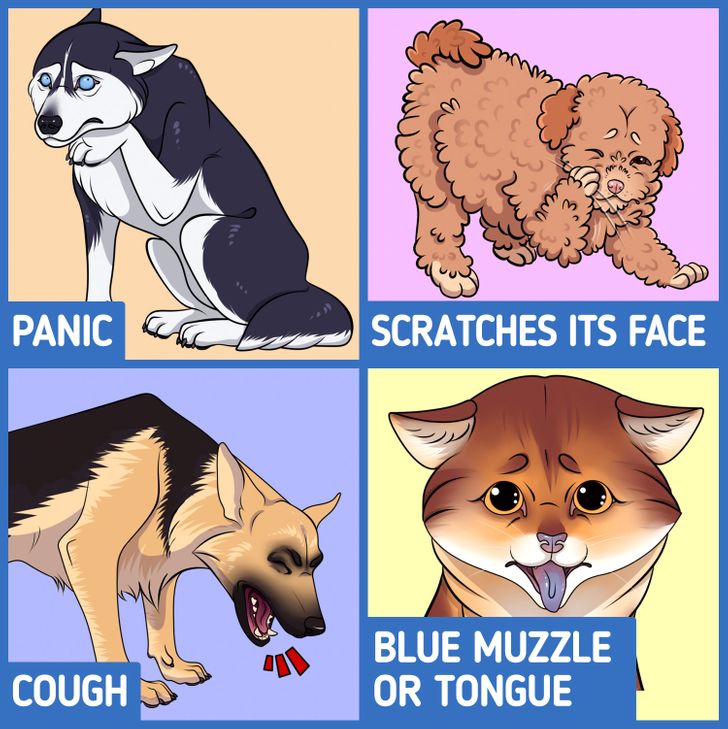
If your dog or cat is choking, it will probably show some of the symptoms that we’ve listed below. Knowing them in advance will help you realize what’s going on before things get out of hand, so it’s important to take the time to read this carefully:
In many cases, you must act quickly and not wait to go to the vet, as it could cost your pet its life.
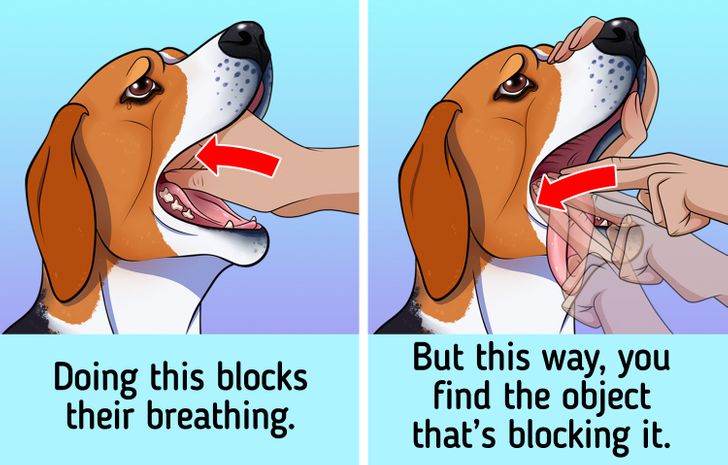
Make sure your pet is under control. Animals going through a suffocation episode often despair. Ask for help from a family member, friend, or neighbor to properly assist your pet.
Pull its tongue to one side and open its mouth as wide as possible. Move the tongue if it returns to its natural position in the middle of its mouth. Sometimes, just by doing this you might be able to remove the object that is obstructing the airway. Try sweeping its tongue with your fingers from the side of his mouth toward the center, but be careful not to insert the object further into its throat. If you feel or see the object, you can gently pull it out with your fingers or pliers.
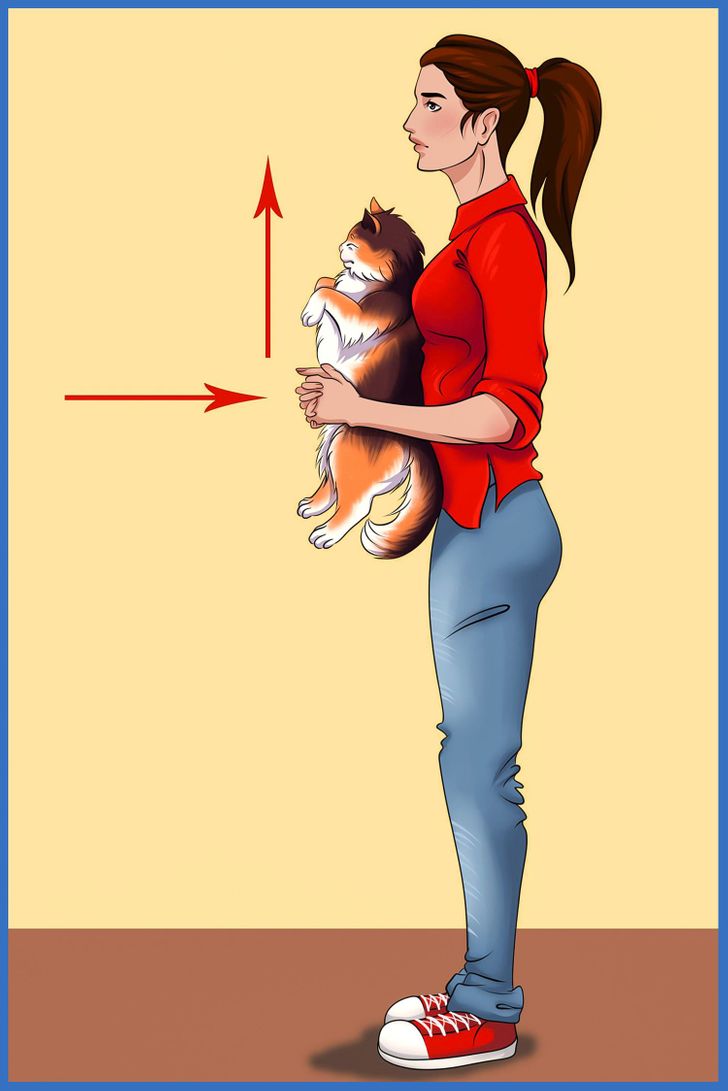
If you can’t find the object, or you see things aren’t getting better, get ready to perform the Heimlich maneuver on your pet by standing up. Their anatomy is different from that of humans, but the principle of the technique remains the same. Depending on their size, it must be performed in different ways.
If your dog is a small breed, or you have a cat instead, carry it by placing its back against your chest, letting his paws dangle naturally. Locate the soft hollow spot that should be under its ribs, in his rib cage. Make a fist and lodge the knuckle of your thumb in this hole. Push it up and into your pet’s stomach about three times. This way, the animal will be able to expel the object.
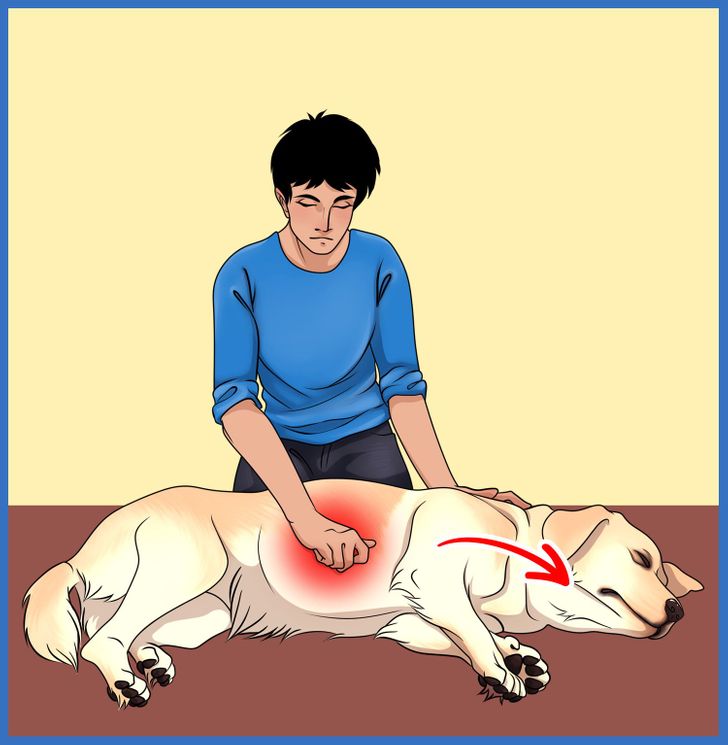
However, if your pet is too heavy to be lifted, you’ll have to use a different technique, but the principle remains the same. Lay it on its side and kneel behind it. Make a fist and lodge the knuckle of your thumb in the hollow of its rib cage and forcefully push inward and toward its head. This may cause the animal to expel the object.
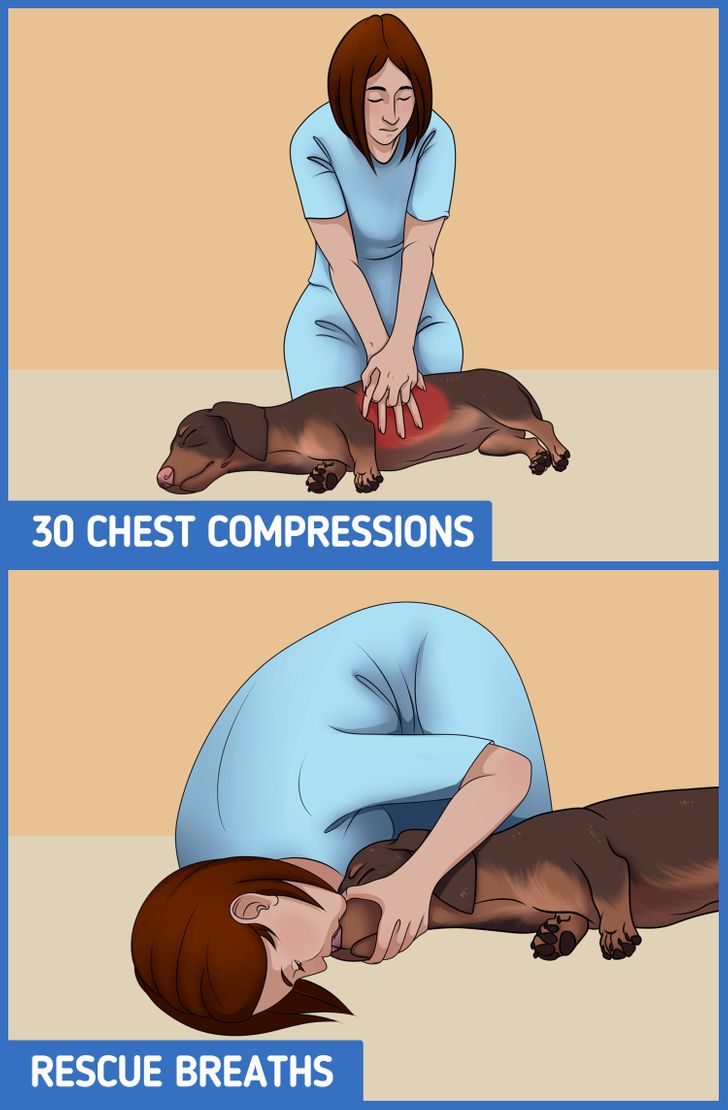
If your pet faints or stops breathing, your best option could be to start performing CPR. Just like with the Heimlich maneuver, the way to do it will depend on the animal’s size:
If you have a cat or small dog, lay it on its side on a flat surface, straighten its neck, and close its mouth. Take a deep breath and blow the air out of your mouth and into its nose. Use your two hands to keep the air from escaping through the sides. Repeat this procedure three times and then perform 100 to 120 chest compressions by pressing with your thumb and forefinger in the area just below the elbow of the upper leg closest to you. Every 30 compressions, blow into its nose.
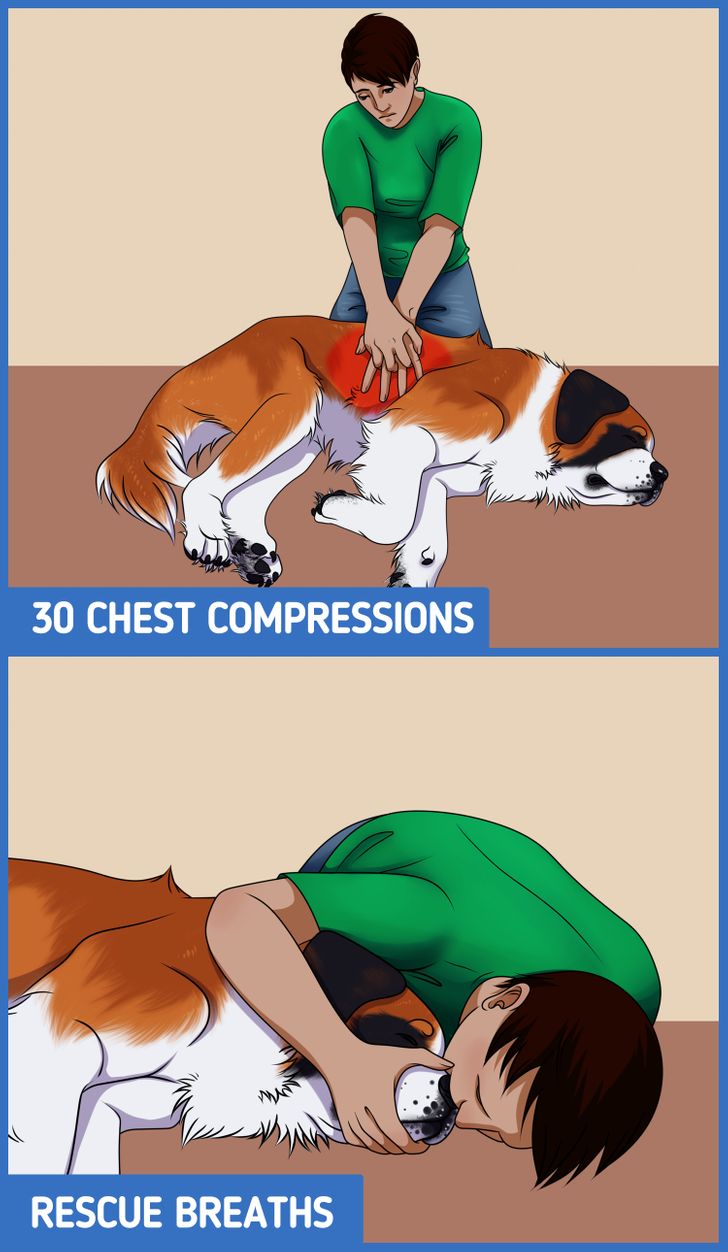
If your dog is very heavy, instead of performing compressions under his leg, do it on his abdomen by placing one palm of your hand on his body and the other on top of that hand. Keep your arms straight and press hard.
If its chest expands, you’re doing it correctly. Repeat until you can detect a heartbeat. You can place your fingers between its thigh and trunk to see if you perceive its pulse. Just like before, make sure you give rescue breaths every 30 chest compressions.
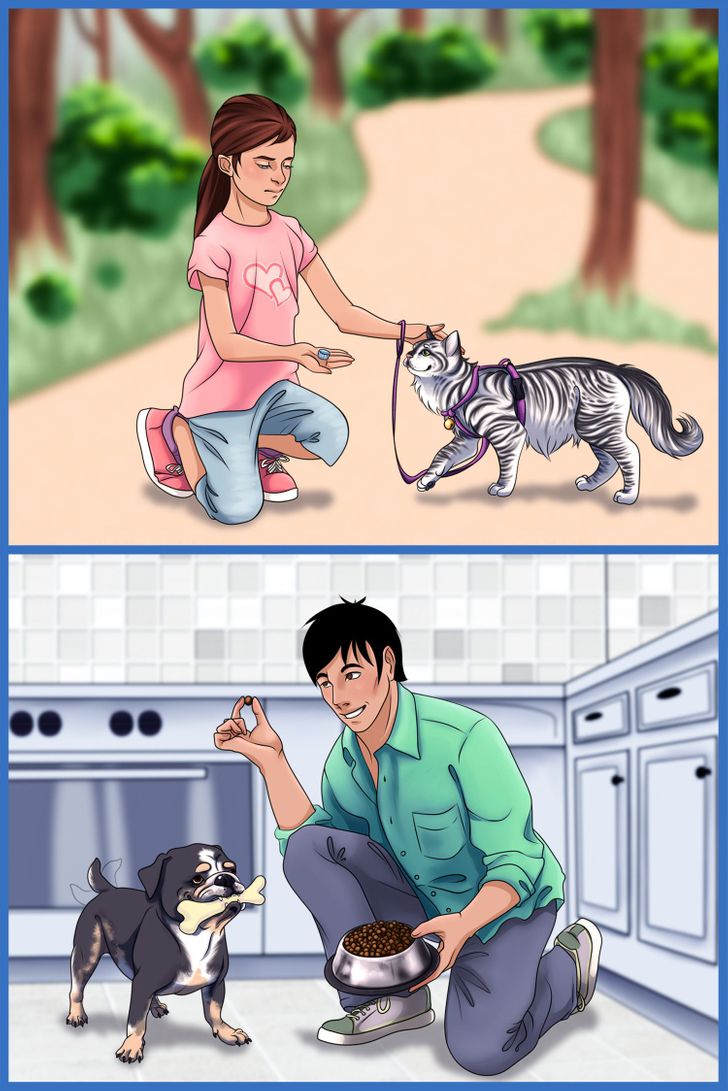
While it’s good to know how to act during an emergency, the best remedy for these types of situations will always be prevention. Paying attention to some details of your pet’s daily life could prevent these types of accidents from occurring. Here are some recommendations to keep your pet’s environment safe:
Make sure that their toys and bones do not fit entirely in their mouths or have parts that could become detached and pose a choking hazard.
Always secure the trash lid.
Keep out of reach any items or objects that could fit entirely in its mouth. This includes the packaging and containers these items came in.
When taking your pet for a walk or spending time outdoors, keep an eye on them. It’s easy to find small objects lying around on the street or park. Watch out for things like bottle caps, for example, that could be a threat to your pet’s safety.
Has your pet ever scared you by eating something it shouldn’t have eaten? What’s the one thing you are most grateful for about having your pet? Let us know if you have any other tips that you think could help others prevent their pets from being in a dangerous situation.

